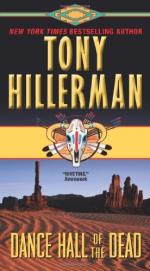|
This section contains 4,757 words (approx. 16 pages at 300 words per page) |

|
SOURCE: Engel, Leonard. “Landscape and Place in Tony Hillerman's Mysteries.” Western American Literature 28, no. 2 (summer 1993): 111-22.
In the following essay, Engel examines Hillerman's use of landscape and place in Dance Hall of the Dead and Listening Woman, noting the importance of each to Leaphorn's search for a Navajo identity.
Beginning with The Blessing Way (1970), and continuing with Dance Hall of the Dead (1973) and Listening Woman (1978), Tony Hillerman features the resourceful and extremely logical Lt. Leaphorn. Leaphorn seeks what may be seen as a central truth of his Navajo background, taught by the female deity Changing Woman—“that the only goal for man was beauty, and that beauty was found only in harmony, and that … harmony of nature was a matter of dazzling complexity.” Leaphorn reads the point of the lesson as emphasizing the “interdependency of nature”; there is in all things “a pattern, and in this pattern, the...
|
This section contains 4,757 words (approx. 16 pages at 300 words per page) |

|


